|
HOME: www.hiltonpond.org |
|||
THIS WEEK at HILTON POND Subscribe for free to our award-winning nature newsletter (Back to Preceding Week; on to Next Week) |
11-19 Nov 2017 & 20-28-Jan 2018 Come be part of a real |
All text, maps, charts & photos © Hilton Pond Center DUCKWEED TURNOVER: It seems almost cliché to say but every year at Hilton Pond Center is different, with 2017 being more different than most--at least as far as the pond is concerned. A comment like that deserves explanation, so please read on. When we first moved to our property near York SC almost 36 years ago, the 11-acre farmstead had gone fallow after being used for row crops and grazing for at least a century. Except for a scattering of towering old hardwoods the land was pretty much open (March 1982, above), with early successional Broomsedge, asters, and invasive shrubs beginning to grow. Since the one-acre pond had been used for watering cattle and recreational purposes--primarily fishing--previous owners kept the banks free of tall vegetation, with grass growing right up to the water line.
All text, maps, charts & photos © Hilton Pond Center From the beginning we adopted a philosophy of laissez-faire land management for the Center, allowing our newly acquired acreage to return to a more natural state (November 2004, above). Mowers were used only to maintain a small lawn around the farmhouse and to groom an extensive trail system that still meanders to every corner of the property. Under this hands-off policy, natural succession occurred in the order expected for this part of the Carolina Piedmont: Old fields were soon replaced by shrubs that gave way to fast-growing trees (Eastern Red Cedar, Sweetgum, Winged Elm, and Loblolly Pine) and then to the current mix of pine and hardwoods (mainly oaks, hickories, Black Cherry, Common Persimmon, and Flowering Dogwood).
All text, maps, charts & photos © Hilton Pond Center The pond margin likewise went through plant succession: Grassy edges first gave way to rushes and sedges, and then to forbs like Swamp Milkweed and water-loving shrubs such as Hazelnut Alder and Buttonbush. Soggy pond banks would not support tree growth--excepting a dozen Baldcypress saplings we planted in the early 1990s--but ten feet or so from the high water mark assorted pines and hardwoods were able to get a root-hold, their branches eventually overhanging the pond for nearly its entire perimeter (August 2013, above).
All text, maps, charts & photos © Hilton Pond Center Interestingly, the pond waters themselves exhibited their own form of natural--or unnatural--succession. Back in 1982 the small impoundment was a thriving fishery that produced good-sized Largemouth Bass and Bluegills--all of which benefited from a maze of aquatic plants in which their fry could hide from bigger fish. Submerged plants, however, tended to foul the lines of those few folks who had fishing privileges at Hilton Pond. In the mid-1990s this led one well-meaning but counter-productive angler to surreptitiously dump ten six-inch-long sterile hybrid Grass Carp into the pond. These non-native fish from Asia are noted for fast growth and prodigious appetites, their diet consisting of virtually anything green around which they can wrap their gaping mouths. The little carp quickly went to work, and within a few years Hilton Pond was devoid of aquatic plants, had a far lower population of panfish, and contained several monstrous carp (above) that ate themselves out of house and home. Incredibly, the last of those "whale-sized" carp died about ten years ago after reaching nearly four feet in length and weighing 30+ pounds!
All text, maps, charts & photos © Hilton Pond Center Further complicating things for the pond, beginning in the early 2000s the Carolina Piedmont suffered through numerous drought years. Cloudless skies meant Hilton Pond received no direct rainfall or run-off to replenish water levels that dropped drastically due to evaporation on hot summer days. The pond's surface area diminished by 50%, with fast-growing grasses and forbs invading the resulting mud flats (Summer 2002, above). Even our aquatic turtles began wandering off (slowly, we might add) in search of wetter, less crowded habitat.
All text, maps, charts & photos © Hilton Pond Center Fortunately, the drought finally broke a few years ago, so with rainfall and the absence of pesky carp the pond re-filled AND vegetation rebounded, in turn allowing significant improvement in native fish populations. Bass and Bluegill are swimming and jumping again, and aquatic invertebrates such as Whirligig Beetles and dragonflies have returned--the latter more plentiful than ever before. Calls of numerous frog species--nearly absent for a decade or more--once again punctuate the night air. Our delightful mixed chorus includes Green Frogs (above), Bullfrogs, Pickerel Frogs, Southern Leopard Frogs, Green Treefrogs and Gray Treefrogs, plus those diminutive Southern Chorus Frogs, Northern Cricket Frogs, and Spring Peepers.
All text, maps, charts & photos © Hilton Pond Center This all brings us to this Summer of 2017, when something very different has happened to Hilton Pond. After another mini-drought last fall water levels were down and stood about four feet below "full pond" through the winter. Our usually detachable floating dock used to check Wood Duck boxes was lying useless on pond bottom rather than sitting even with the pier. Thus, we watched with relief as several "frogstranglers" in May and June inundated the property and brought the pond surface back to within ten inches of optimum. At about the same time Hilton Pond took on a new appearance: Instead of being clear with a little algae growing here and there, in early July parts of the pond surface turned green. When we went out to take a look, it was immediately apparent small colonies of floating aquatic duckweed had begun to grow. Now, just three weeks later (above), the pond is covered almost entirely with duckweed! To finish this tale we ought explain what duckweeds actually are. Despite popular belief, they are NOT algae but tiny flowering plants. Four Carolina genera of duckweed are actually in the same family (Araceae) as other much larger primitive plants such as native Skunk Cabbage and Jack-in-the-Pulpit, and ornamental Peace and Calla lilies. (NOTE: Some botanists still place duckweeds in their own family, Lemnaceae. With the onset of chromosomal analysis, all taxonomy seems in flux, so stay tuned for changes.) As the name suggests, duckweeds are commonly eaten by dabbling ducks (Mallards, Ring-necked Ducks, Blue-winged Teal, etc.) that are mostly herbivorous.
All text, maps, charts & photos © Hilton Pond Center The most common species worldwide is Lesser Duckweed, Lemna minor--so named by Theophrastus (a naturalist protégé of Aristotle)--from the Greek word limne, referring to a swampy area or lake. (NOTE: A limnologist is one who studies lakes and other freshwater habitats.) Indeed, we first thought our green sheen was this species, but upon closer examination it turned out to be a more minute duckweed and, perhaps, the world's smallest flowering plant: Rootless Duckweed, Wolffia columbiana (above and below). Its alternate name of "Columbia Watermeal" arose because a handful rubbed between the palms has a granular or mealy feel.
All text, maps, charts & photos © Hilton Pond Center Rootless Duckweed--a North American native--has one floating green leaf but, as the name suggests, no roots or rootlets that hang in the water like some other duckweeds. The leaf absorbs dissolved nutrients it then uses as it carries out photosynthetic food production
All text, maps, charts & photos © Hilton Pond Center Rootless Duckweed rarely forms a <1mm seed from an equally tiny flower but typically reproduces asexually by budding (above). This can be a rapid occurrence, with each Rootless Duckweed individual reportedly doubling itself in 18 to 36 hours, depending on conditions. At that rate it's easy to understand how our local duckweed population could have nearly covered Hilton Pond in less than a month. For our first 35 years at the Center we never had noticeable growth of any duckweed species on Hilton Pond, so we were understandably astounded to see a near-total takeover in 2017. What could have happened for this invasion to occur? We discounted several possible causative factors, as follows.
All text, maps, charts & photos © Hilton Pond Center Duckweeds typically are transported from pond to pond on feet and feathers of birds, but through the decades we've always had plenty of Wood Ducks and Mallards (drake and hen, above) without a duckweed bloom. Then, too, it's been years since we had any Grass Carp that would have eaten duckweed prior to 2017, so we ruled out lack of carp as an immediate cause of our current infestation. Lastly, this spring neighboring farmers uphill from us once again spread sludge and/or turkey manure on their fields with at least some nitrogen-rich run-off likely reaching the pond--but they've done THAT for several years. All we can figure is that because water levels were so low, Hilton Pond did not "turn over" last fall or this spring--hence the duckweed.
All text, maps, charts & photos © Hilton Pond Center "Turnover" is a fairly common phenomenon with small farm ponds. In a well-aerated impoundment there is constant mixing of water layers; for ones like Hilton Pond--no aeration pumps, not fed by a fast-moving stream, and little or no outflow--water tends to stagnate, allowing three distinct layers to form. In pond stratification: 1) The top layer (epilimnion) is warmer and oxygen rich, so that's where fish and plants occur; 2) the bottom layer (hypolimnion) is cold and oxygen-deprived and devoid of much life; and, 3) there may be a transition layer (metalimnion) that interfaces the two. Typically in autumn as temperatures drop the pond's top layer becomes denser and mixes down into the hypolimnion, churning the water and bringing up mud, muck, and detritus from the bottom--often giving off a strong odor of blue-green algae and decaying matter. Such turnover may happen gradually, although one cool October day at Hilton Pond we watched (and smelled) a turnover occur in a matter of hours.
All text, maps, charts & photos © Hilton Pond Center Again, Hilton Pond--normally 11 feet at its deepest point--was at six feet or less last fall and winter, which probably meant there wasn't much stratification or temperature differential. When our torrential May and June precipitation finally fell (above), the pond nearly doubled its depth and a new, cold layer of rainwater sank toward the bottom. We hypothesize an out-of-season turnover brought lots of nitrogen and organic material to the surface--right where Rootless Duckweed could use newly available nutrients to fuel a population explosion. Such a phenomenon, no matter the cause, is both good and bad for the pond.
All text, maps, charts & photos © Hilton Pond Center The most positive thing about a carpet of Rootless Duckweed on Hilton Pond is it dramatically slows hot weather evaporation and water loss that, until this summer, has always been inevitable. On the other hand, the current floating duckweed growth is so dense it blocks out sunlight usually available to submerged aquatic plants that help oxygenate the water and provide shelter for fish and other pond life. (Might it be the case that Green Frogs, above, even get a little tired of peering through all that duckweed--in this case, Lemna minor?) On the bright side, the new duckweed mat is absorbing and sequestering an overabundance of nutrients that may have upset pond balance in the first place. However, when our duckweed crop dies this winter it will sink to the bottom and release all those nutrients, putting us back to square one. (About the only solution is to harvest the duckweed and compost it away from the pond. In many countries various duckweeds are collected and fed to cows and cattle; after all, dried duckweed is about 40% protein--equivalent to Soybeans. Duckweed also has been investigated as a biofuel to replace land-hogging corn grown for gasohol.) And one more item on duckweed's plus side: If we get a lot of ducks this fall before the Rootless Duckweed dies, visiting waterfowl will be in duckweed heaven.
All text, maps, charts & photos © Hilton Pond Center It may sound slothful, but we're not about to mechanically remove our duckweed infestation by raking the one-acre pond or using one of those newfangled Parachute Skimmers (above), nor are we going to re-introduce voracious Grass Carp that might eat and eliminate duckweed (along with all other aquatic vegetation). Bottom line is our 36-year-old laissez-faire philosophy of habitat management comes into play in 2017, so we'll just sit back to see what happens to Hilton Pond and our newly established Rootless Duckweed colony. When all is said and done, we don't know if our "pondwater turnover" hypothesis explains the current duckweed invasion, but we have chosen to be observers and chroniclers of nature, not manipulators. We suspect if left alone Mother Nature will take care of herself and Hilton Pond will either continue as an old farm pond or eventually become Hilton Bog, then Hilton Meadow, and finally a Hilton Forest just like the rest of the property. All text, maps, charts & photos © Hilton Pond Center Don't forget to scroll down for Nature Notes & Photos, 
Checks can be sent to Hilton Pond Center at: All contributions are tax-deductible on your |
|---|
|
"This Week at Hilton Pond" is written and photographed by Bill Hilton Jr., executive director of Hilton Pond Center for Piedmont Natural History
|
|
|
Please refer "This Week at Hilton Pond" to others by clicking on this button: |
Comments or questions about this week's installment? Send an E-mail to INFO. (Be sure to scroll down for a tally of birds banded/recaptured during the period, plus other nature notes.) |

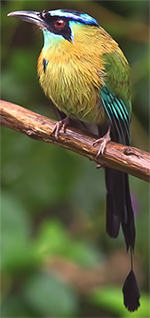 STILL TIME TO SIGN UP
STILL TIME TO SIGN UP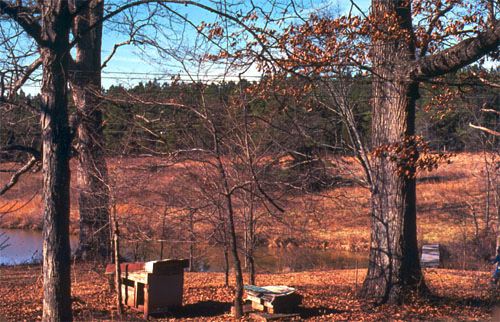
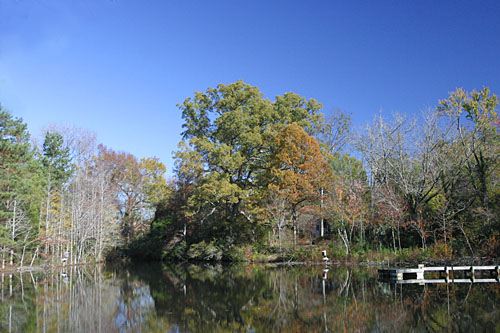
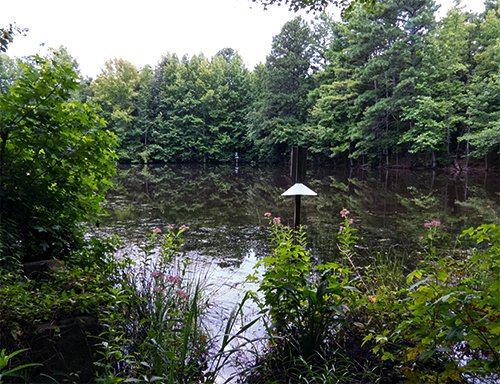
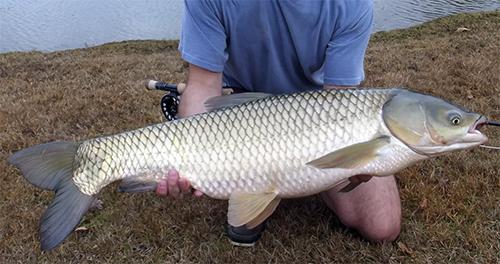
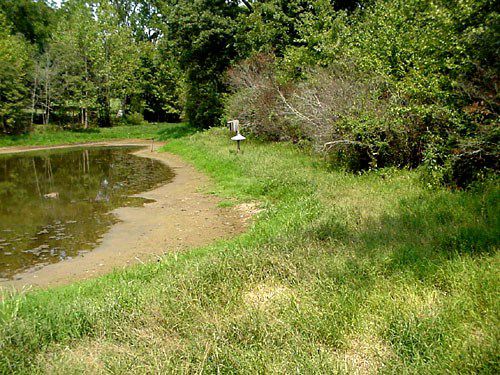
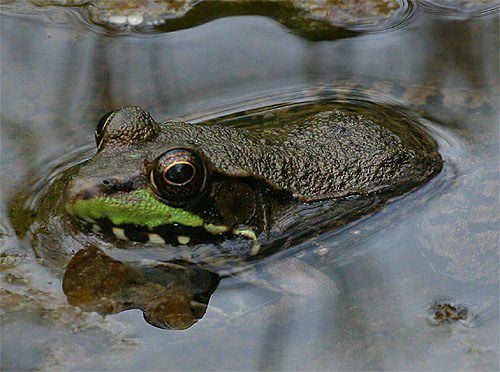
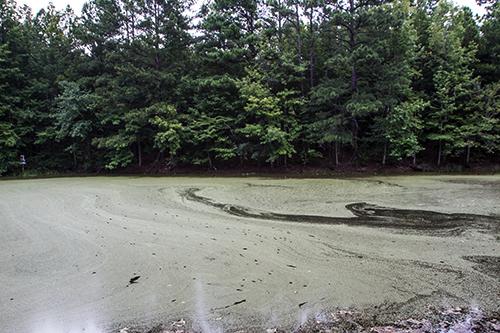
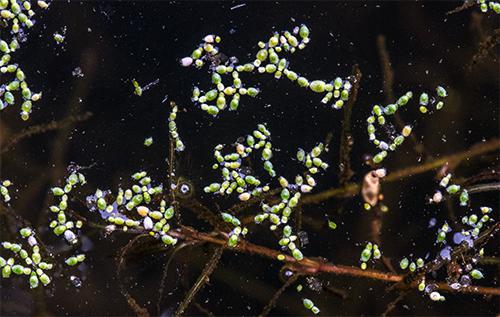
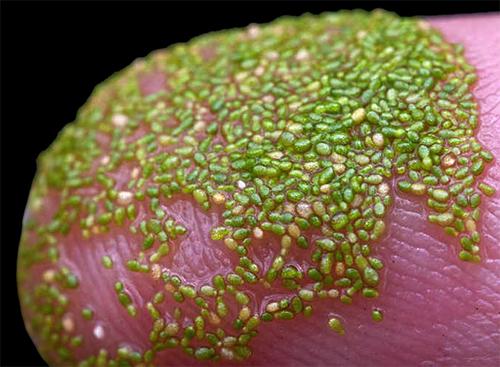
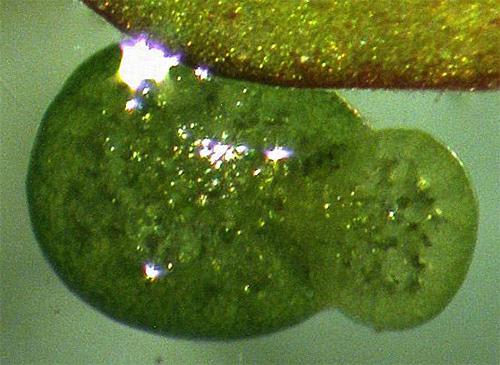
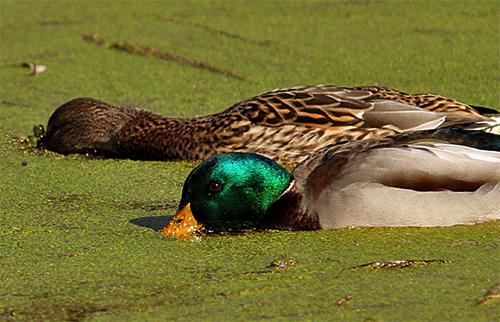
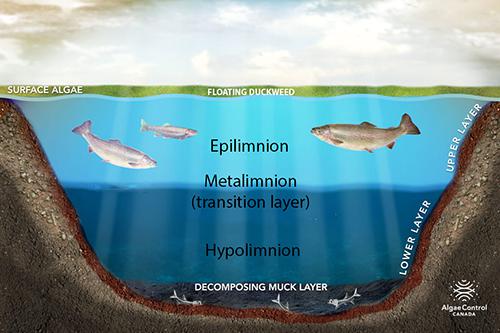
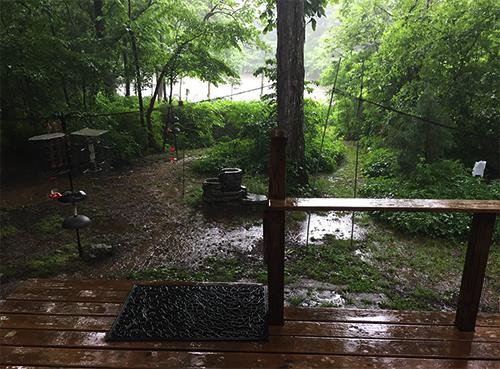

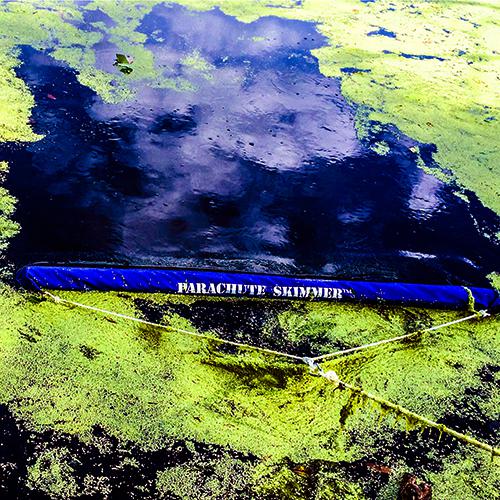








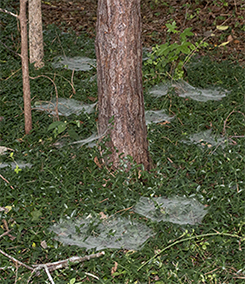
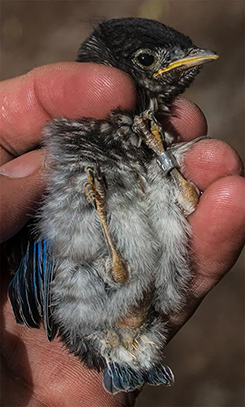
 Please report your
Please report your